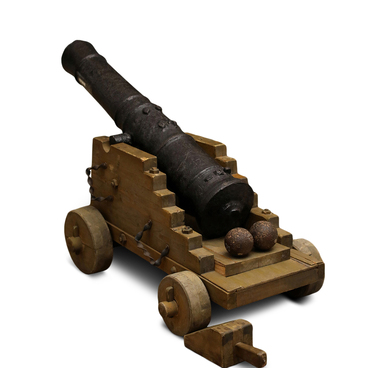It is a known fact that the Cossacks who rebelled in 1773 had banners. According to researchers, on September 19, 1773, the Don Cossack Yemelyan Pugachev stormed Yaitsky Gorodok with a detachment of 200 men, carrying “banners prepared in advance”. Some of these banners may have included the state symbols of Russia.
One such banner, that of the Yadrin detachment of Pugachev’s troops, has been preserved and is now on display at a museum in Cheboksary. It was made of canvas and had a black, cross-shaped patch in the center.
Banners were very important. Researchers believe that not a single unit of Pugachev’s army went into battle without a banner.
Yemelyan Ivanovich Pugachev attempted to introduce elements of proper military organization in his rebel detachments. He held the rank of cornet, which was a junior officer position in the Cossack troops of the Russian Army, corresponding to the rank of second lieutenant in infantry or ensign in cavalry. Yemelyan Pugachev earned this rank by storming the Turkish fortress of Bendery during the Russo-Turkish War of 1768–1774. In the Cossack troops at the time, the cornet also served as the standard bearer.
In Pugachev’s rebel units, standard bearers were appointed specifically for this task and were awarded the rank of cornet.
There were no emblems, allegorical images, or inscriptions on rebel flags. One participant in the events stated that “each regiment had its own banner, made of yellow or red silk fabric. Crosses were embroidered on some flags, while others featured the face of Jesus Christ or Saint Nicholas the Wonderworker.”
Usually, the banners were created by detachments based on the state banners of the regular army, and mainly resembled Cossack marching flags — standards, badges (znachok), and tugs (bunchuk). They were made from taffeta, damask, or silk fabrics in white, red, and other colors. Such flags had borders, an embroidered image of the state coat of arms, gold fringe, and inscriptions.
A znachok was made of multicolored taffeta with
borders and two or three tails. This term was often applied to the banners of
sotnyas and companies. A bunchuk consisted of a long pole and a bundle of long
horse hair, with colored hair or silk rope attached at the top, and a
silver-gilded plaque with an inscription. These symbols represented the power
of hetman and Cossack leaders. They were crafted from silk fabrics of various
colors and had borders. They often featured the faces and figures of saints as
well as crosses and stars.


